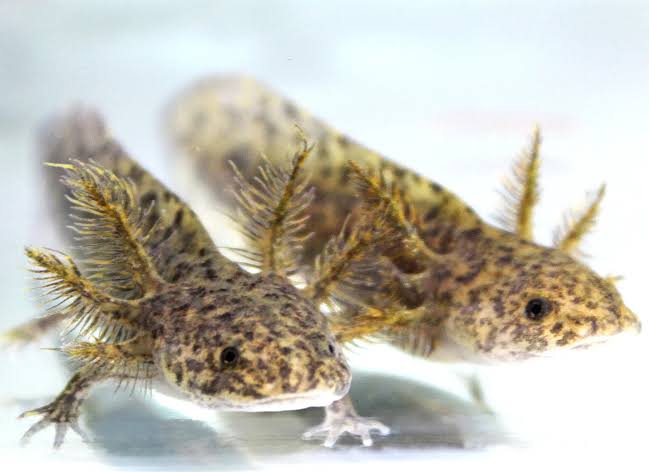Axolotl (Wild Green Morph)
The axolotl (Ambystoma mexicanum) is a unique and fascinating amphibian native to Mexico, particularly the lakes underlying Mexico City. Unlike most amphibians, axolotls are neotenic, meaning they retain their larval features, such as gills and a finned tail, throughout their lives and do not undergo metamorphosis.
Earn 35.00 Reward Points₱4,000.00 Original price was: ₱4,000.00.₱3,500.00Current price is: ₱3,500.00.
Availability: 5 in stock
Your live fish may not match the image shown due to natural variations in each species. Each companion animal is different in shape, color, and personality.
Scan to Purchase
Tank Setup
- Tank Size: Minimum 20 gallons for one adult; larger is better.
- Substrate: Fine sand or bare bottom; avoid gravel to prevent ingestion.
- Water Temperature: 60-68°F (16-20°C); avoid temperatures above 72°F (22°C).
- Water Parameters: pH 6.5-8.0; ammonia and nitrites at 0 ppm, nitrates below 20 ppm.
- Filtration: Use a filter with gentle flow; sponge filters are ideal.
- Hiding Spots: Provide caves, PVC pipes, or other hides to reduce stress.
- Lighting: Low light levels; avoid direct sunlight.
Water Quality
- Dechlorination: Always use a water conditioner to remove chlorine and chloramine.
- Water Changes: 20-30% weekly water change; use dechlorinated water.
- Monitoring: Regularly test water parameters with a reliable test kit.
Feeding
- Diet: Carnivorous; feed earthworms, bloodworms, blackworms, and axolotl pellets.
- Feeding Frequency: Juveniles daily; adults 2-3 times a week.
- Portion Size: Offer as much as they can eat in 2-3 minutes.
Health and Handling
- Handling: Minimize handling; use a soft net if necessary.
- Common Health Issues: Watch for signs of stress, fungal infections, and gill damage.
- Quarantine New Additions: Quarantine any new tank mates or plants for at least 30 days.
Tank Mates
- Compatibility: Best kept alone or with other axolotls of similar size; avoid fish or aggressive species.
- Behavior Monitoring: Monitor for signs of aggression or stress among tank mates.
Breeding
- Temperature: Slightly lower temperatures can trigger breeding.
- Egg Care: Remove adults after laying eggs to prevent them from eating the eggs.
- Hatchling Care: Feed newly hatched brine shrimp or microworms.
Additional Tips
- Observe Regularly: Watch for changes in behavior or appearance.
- Avoid Chemicals: Do not use soaps or chemicals to clean tank equipment.
- Consult a Vet: Seek advice from a vet experienced with amphibians if health issues arise.
This guide should help you provide a suitable and healthy environment for your axolotl.
You must be logged in to post a review.
Related products
-
Neon Tetra
Earn 0.60 Reward Points₱65.00Original price was: ₱65.00.₱60.00Current price is: ₱60.00. Add to cart









Reviews
There are no reviews yet.